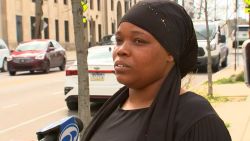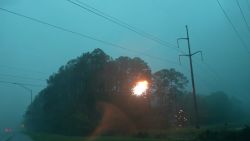Editor’s Note: How are you preparing for Tropical Storm Barry? When it’s safe, you can text, iMessage or WhatsApp your videos, photos and stories to CNN at +1 347-322-0415
Samantha Kincaid was forced to evacuate during Hurricane Gustav in 2008, her first year in New Orleans. Now, she’s leaving again.
This week’s widespread flooding in New Orleans ahead of a slow-moving storm system made her uneasy, she told CNN in a Facebook message.
“Being stuck in the flood and then waiting for the waters to go down was a real wake up call,” said Kincaid, who made plans Thursday to head to west to Lafayette. “I was lucky to not have my car stall out.”
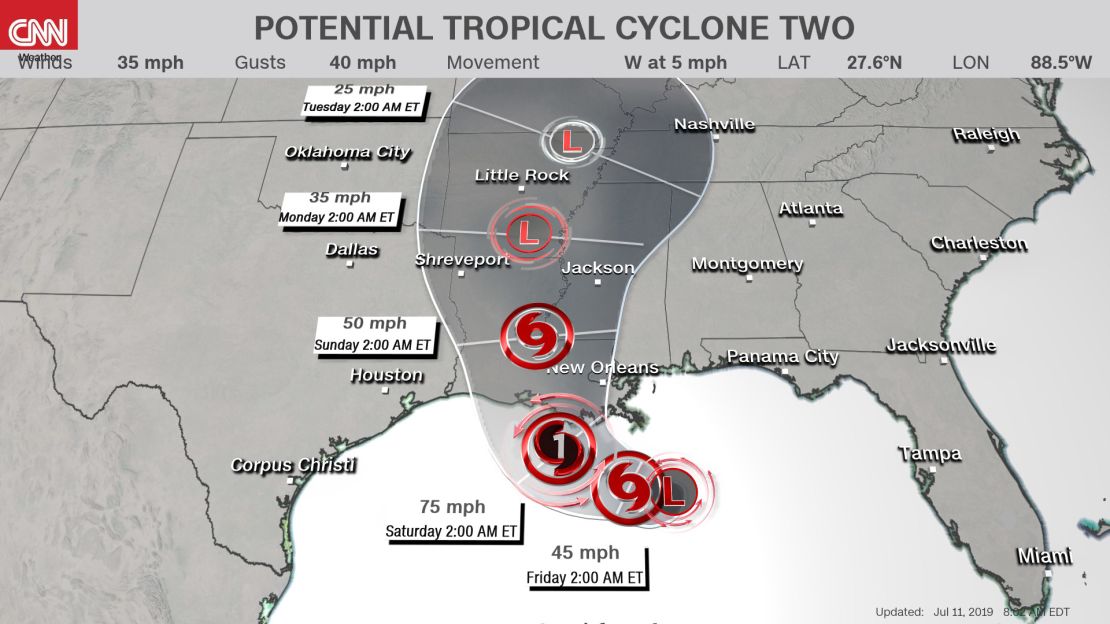
As a dangerous weather system spinning toward the Gulf coast intensified Thursday to become Tropical Storm Barry, some Louisiana residents aren’t taking any chances and are choosing to evacuate. Others say they plan to ride the storm out.
Barry is the first tropical storm to threaten the United States this year. The forecast shows it as a tropical storm at landfall, possibly by Saturday morning on the Louisiana coast, probably west of New Orleans. There is a significant chance that Barry could be a hurricane, with sustained winds of 74 miles per hour, when it makes landfall.
But it’s not the wind that makes this storm so treacherous. It’s the colossal rainfall and massive storm surge.
“This is a life-threatening situation,” the National Hurricane Center said. Those in the storm’s path should “take all necessary actions to protect life and property from rising water and the potential for other dangerous conditions.”
Streets in New Orleans turned into lakes after getting pummeled with up to 9 inches of rain Wednesday – a day before the system was declared a tropical storm.
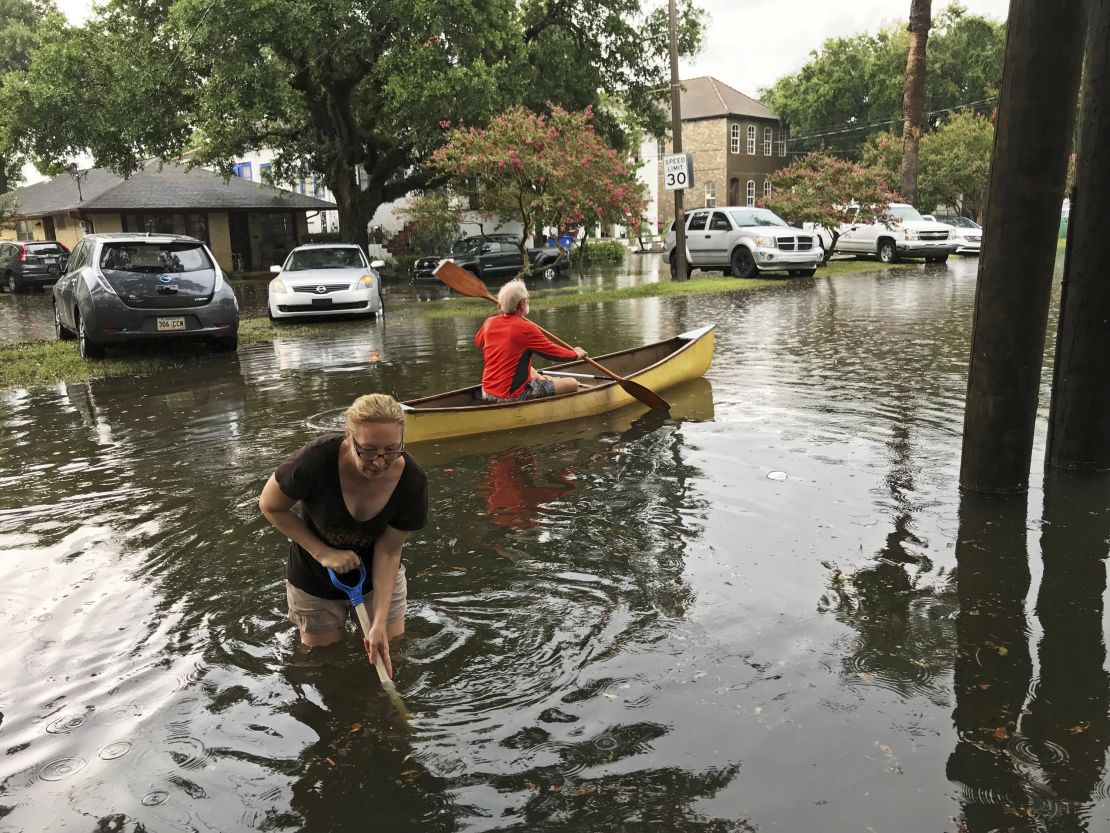
Whether to stay or whether to go
Claire Hartley Grogan of New Orleans said she too was preparing to evacuate. She will probably head toward Florida and have a “hurrication.”
The Mississippi River was too high, and she was scared to stay.
“My entire life, I have lived blocks from the Mississippi River and not been scared. Today, and for the last month or so, [I] have been terrified,” she said.
Pamela Hughes said she will ride out the storm in her mother’s trailer in Port Sulphur, south of New Orleans in Plaquemines Parish, which is under a mandatory evacuation order.
But Hughes said she knows the risk and is staying, even though the trailer isn’t on high ground.
“I really don’t think it’s going to be too bad,” she said.
Hughes says she’s prepared with gas, food and water. She said the levels of the Mississippi River near Port Sulphur, and the nearby bayou, look low to her.
But Hughes said she evacuated her mother, who has breast cancer and recently got out of the hospital.
As of late Thursday, Barry was hurling winds of 50 mph in the Gulf of Mexico, but it’s expected to continue to intensify, the National Hurricane Center said.
Because Barry is a slow-moving storm – crawling across the Gulf at just 3 mph – it will hover over the same places for a long time, dropping relentless rain and adding to widespread flooding.
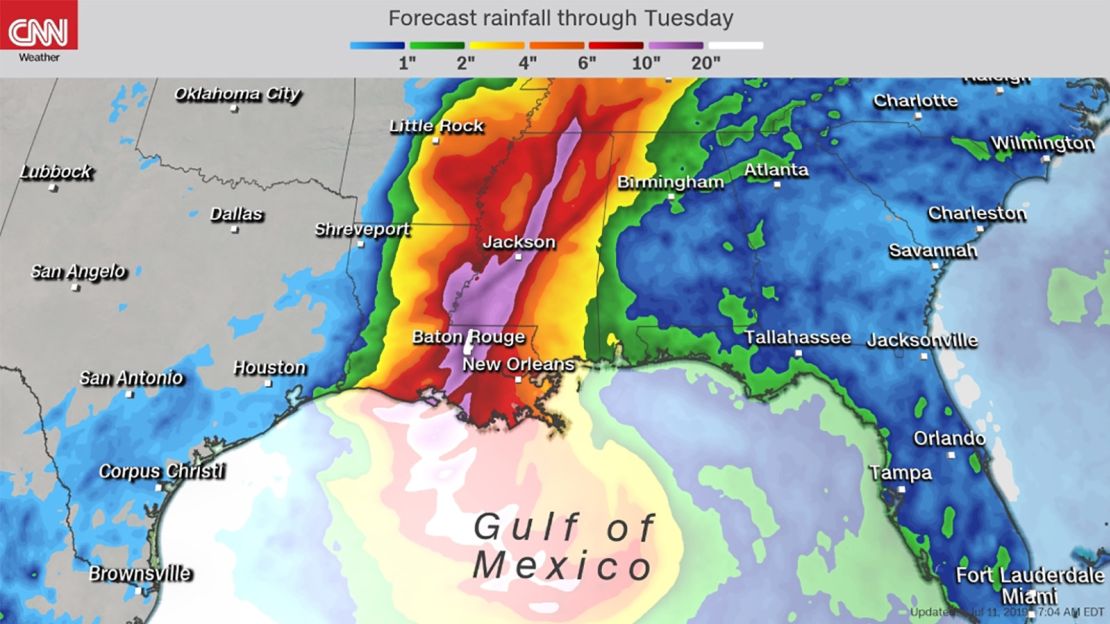
The National Hurricane Center issued hurricane warnings for the Louisiana coast from Intracoastal City to Grand Isle.
The mayor and town council in Grand Isle, on a barrier island the Gulf of Mexico, ordered everyone to evacuate Thursday.
“We are expecting a rain fall total that can range from 6” to 10”,” they said in a statement. “We will be experiencing unusual high tides that will range more than 3 feet above ground.”
Baton Rouge, which is northwest of New Orleans, is expected to get 10 to 15 inches of rain. Resident Rusty Miller said that his experience with previous storm evacuations taught him to hunker down and hope the electricity stays on. He is staying put for now. But this time, he said, he’s worried about flooding.
“As long as this thing doesn’t stall, we should be fine,” Miller said.
Mississippi, Alabama and the western Florida Panhandle are also at risk for extreme rain, CNN meteorologist Haley Brink said Thursday.
An unprecedented challenge
Barry will inundate Louisiana at a terrible time: when rivers like the Mississippi are already extremely high.
“This is the 258th day of a flood fight on the Mississippi River,” Gov. John Bel Edwards said Thursday.
Unusually high river levels will lead to an unprecedented challenge when Barry makes landfall.
“This is the first time we’ve had a tropical system with water levels on the river this high,” said Jeffrey Graschel, a hydrologist with the National Weather Service’s Lower Mississippi River Forecast Center.
In New Orleans, the Mississippi River was more than 16 feet high on Thursday. At this time of year, it should be more like 6 to 8 feet, Graschel said.
In the coming days, the river could crest at 19 feet, 1 foot lower than previously forecast. But the bloated river is still risky, because New Orleans is protected only to a height of 20 feet.
In preparation for the onslaught, Louisiana officials have started closing floodgates. The Southeast Louisiana Flood Protection Authority has about 250 floodgates, spokesman Antwan Harris said.
More than 200 floodgates in Orleans and St. Bernard parishes are expected to be closed by Friday to protect the area from the expected storm surge, local media reported.
Louisiana’s governor warned that “no one should take this storm lightly,” as 10 to 15 inches of rain could fall within 24 hours between Friday and Saturday.
The governor sent a letter to President Donald Trump requesting a federal declaration of emergency as the storm approached.
He also declared a state of emergency and urged residents to have a contingency plan for family and pets.
The US Postal Service temporarily relocated operations to other parts of the state due to mandatory evacuations.
‘The calm before the storm’
In one part of New Orleans, some residents have remained calm.
Heather Cafarella, a bartender at R Bar, said people didn’t appear to be panicking. She asking each other if they’re going to evacuate is almost like asking “how’s the weather?”
“It’s not just the hurricane. We flood when there’s heavy rain. It doesn’t take much, unfortunately,” Cafarella, 41, said.
She glanced outside at a sunny, dry street. “The calm before the storm is so deceiving,” she said.
CNN’s Faith Karimi, Dave Hennen, Monica Garrett, Amanda Watts, Joe Sutton, Taylor Ward, Christine Sever, Jamiel Lynch, Michael Nedelman and Dave Alsup contributed to this report.















